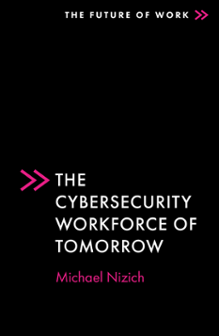Center for Internet Security (CIS)
, 25–26
Center for Strategic and International Studies (CSIS)
, 14
Cloud computing technology
, 51–52
Cloud-enabled data trusts
, 109
Computer and network security
, 41
Cross-site scripting attack (XSS attack)
, 10, 100
Cybersecurity
, 1–2, 63–64
analysts
, 99–100
case-based scenario
, 34–35, 61, 97–98
certifications
, 126–127
challenges to global business and government
, 15–19
CMMC
, 27–29
competitions
, 133–135
cost of cyber crime
, 3–4
current and future cybersecurity roles and responsibilities
, 69–70
current cybersecurity job titles
, 88
current technologies
, 37–42
cyberattack methods
, 7–9
emerging technologies in
, 42–59
expert opinion
, 32, 34, 59, 61
frameworks of tomorrow
, 27–29
human resources and cybersecurity workforce of tomorrow
, 70–88
information systems
, 37–38
internships and co-ops
, 135
IT security governance
, 24–27
managing risk
, 20–24
market for stolen data
, 4–7
Matt Pascucci, Security Director, Evercore Group
, 32–34
NICE Cybersecurity framework
, 67–69
ranges
, 133
recruiting cybersecurity professional
, 84–85
retaining cybersecurity professional
, 85–88
risk management
, 21–22
sandboxes
, 132
simulation
, 139
software
, 42
Solarium Report
, 29
workers
, 96
workforce
, 9, 15, 69
Cybersecurity education at every level
, 126–130
community colleges
, 129
K-12 education
, 127
professional certificates
, 126–127
undergraduate and graduate degrees
, 130
Cybersecurity Framework (CSF)
, 26–27
Cybersecurity Maturity Model Certification (CMMC)
, 27, 29
Cybersecurity toolbox
, 42, 99, 107, 112
border routers
, 106
case-based scenario
, 114–115
expert opinion
, 112–114
firewalls
, 106
intrusion detection
, 102–103
IPSs
, 104
network and packet analysis
, 101
penetration testing
, 103–104
perimeter security
, 103
Secure Software Design
, 106–107
UTM
, 106
virus and malware protection
, 101–102
Cyberspace Solarium Commission
, 29
